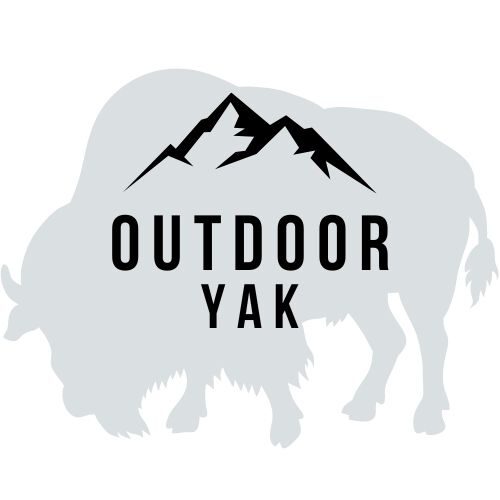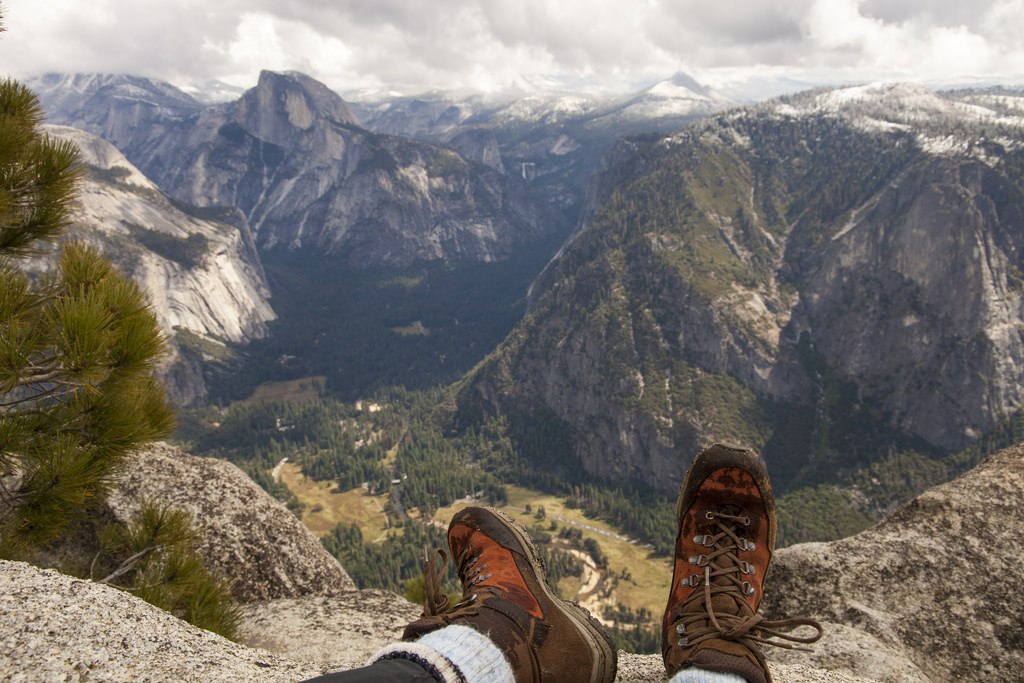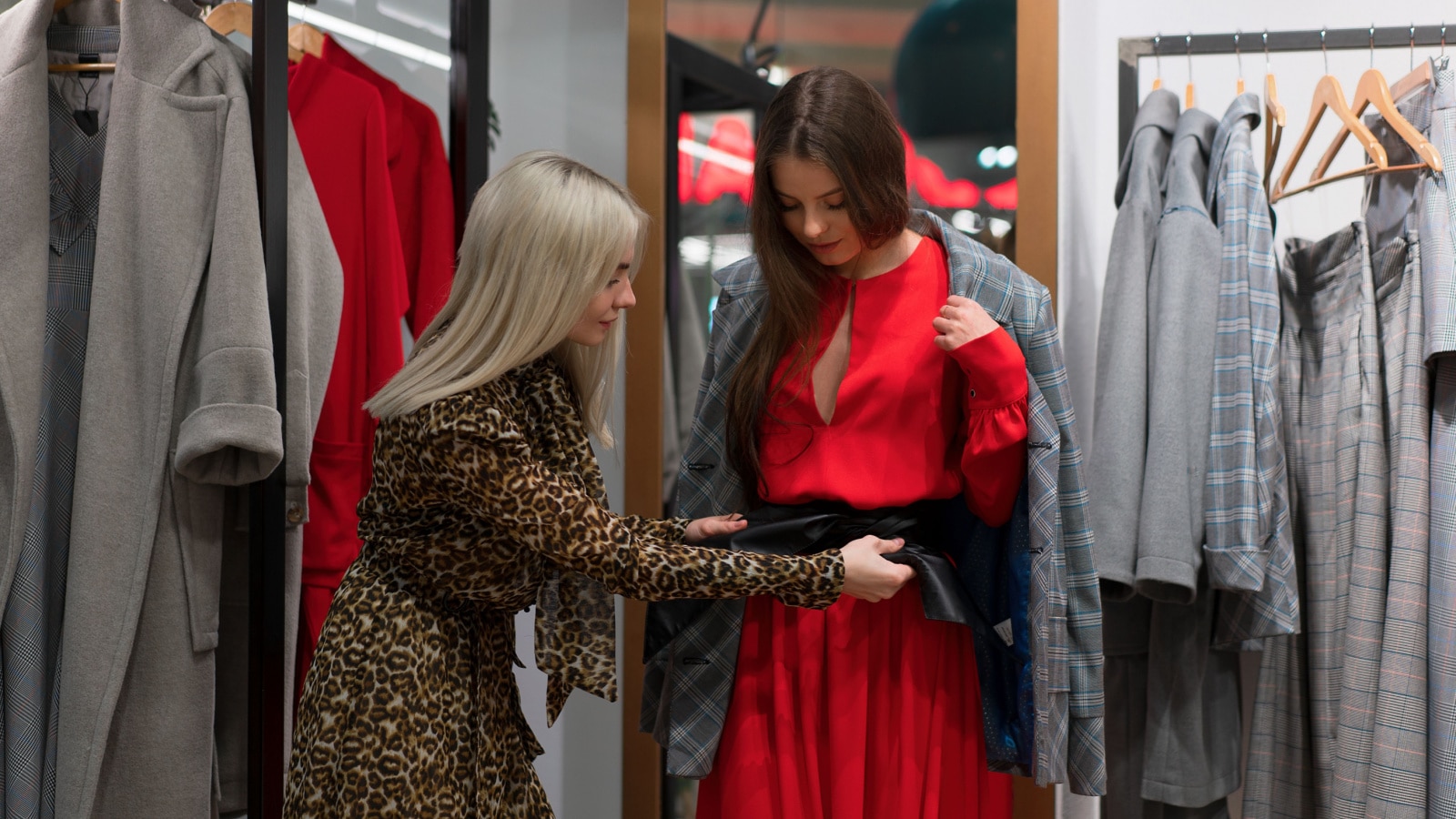Are you heading out hiking for the first time in a while and wondering if you need to invest in some hiking boots or can you simply wear your old tennis trainers?
You don’t need to wear hiking boots, but there are many advantages to wearing them – especially if you’re carrying a large backpack. Hiking boots have a thick rigid sole and ankle support – and are able to withstand the wear and tear you’ll experience on miles of terrain from loose rocks to muddy trails.
A popular alternative to hiking boots is trail running boots which are lighter, more flexible and dry faster.
Below I’ll run over the pros and cons of each type of shoe and help you decide what footwear to choose on your next outdoor adventure.
1. Hiking Boots
Hiking boots are very durable, they have a hard sole and higher ankle support. They’re designed to be highly durable, water-resistant (are hiking boots waterproof?) and protect your feet from sharp rocks and the wild outdoors for hundreds of miles.
When your backpacking over long distances with a heavy backpack, the thick base on hiking boots provide a sturdy platform to support your extra weight and give you better traction on loose rocks.
Up until recently hiking boots wear pretty heavy, but recent advances in materials have made hiking boots incredibly light. These new models are still pretty durable and weigh only a bit more than trainers. These lighter models take away one of the main problems some people have had with hiking boots in the past – notably their weight.
So if you’ve not tried on any hiking boots in a few years, you may be surprised at just how light the newer versions are.
That said many hikers still prefer their trail runner which are like a cross between hiking boots and trainers. More on the pros and cons of these below.
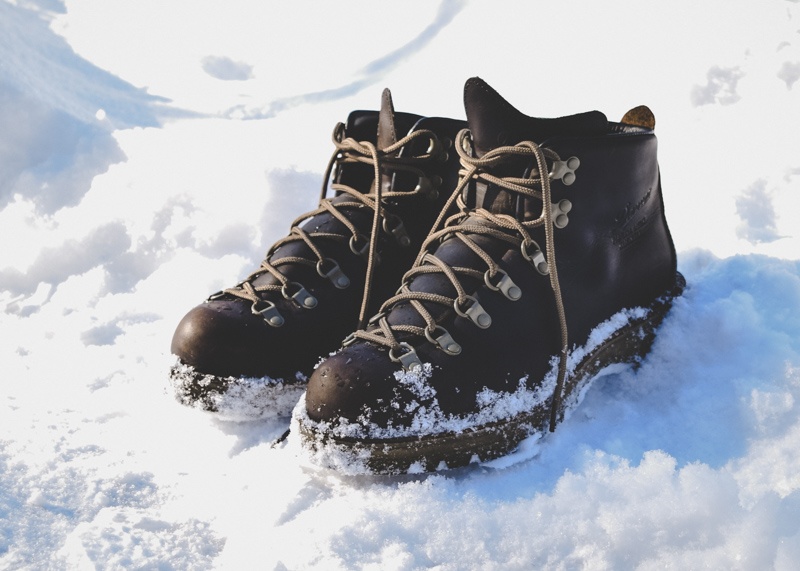
2. Trail Runners
Trailer runners are lighter, more flexible and more breathable. They range from the ultralightweight more flexible variety to the more durable and rigid style – which work better for longer trecks.
Let’s run over the main benefits of trail runners in more details.
Arguments for trail runners:
1. Lighter
Just like with hiking boots, the new breed of trail runners are incredibly light which makes them liberating for hikers and backpackers. Many models still have excellent grip, but the thinner sole and lower profile make them extremely lightweight and perfect for the ultralight backpacker. They’re easier to walk in and carry in you pack when you’re traveling in planes and cars.
2. More flexibility
There are many varieties, but overall trail runners have a thinner sole and a less rigid structure. This makes them more flexible and adaptable to a range of terrains. From being more nimble to feeling lighter on your feet – trail runners give you speed and greater agility as a hiker.
3. Dry quicker
Trail runners are thinner and more breathable. If you get a pair with a waterproof membrane like Gore-Tex then you’ll get shoe that is both breathable and fully waterproof. Depending on the terrain your hiking in and the local climate – you might not need waterproof boot and so you’ll be looking for maximum breathability.
The more breathable the boots, the quicker they will dry and the less sweat and moisture will build up internally – helping to keep your feet in good condition.
In wetter climates, non-waterproof trail runners will get wet fast but will dry pretty quickly overnight. But really, you’ll want a waterproof boot to avoid trekking all day with soggy feet.
Arguments against trail runners:
There are a few downsides to using trail runners. The main one is the number of miles you can cover
1. Shorter life expectancy
Trailer runners are lighter and less durable than hiking boots which means they’ll suffer from wear and tear faster. They should still last a season or two of full hiking, but their lifespans are definitely a bit shorter.
2. Less support
Trailer runner will have a thinner sole, less rigidity, and no ankle support. While all these are not necessary, they will impact your feet in different ways. Trail runners work for many people but some hikers prefer the extra support and feel of hiking boots.
3. Hiking Sandals
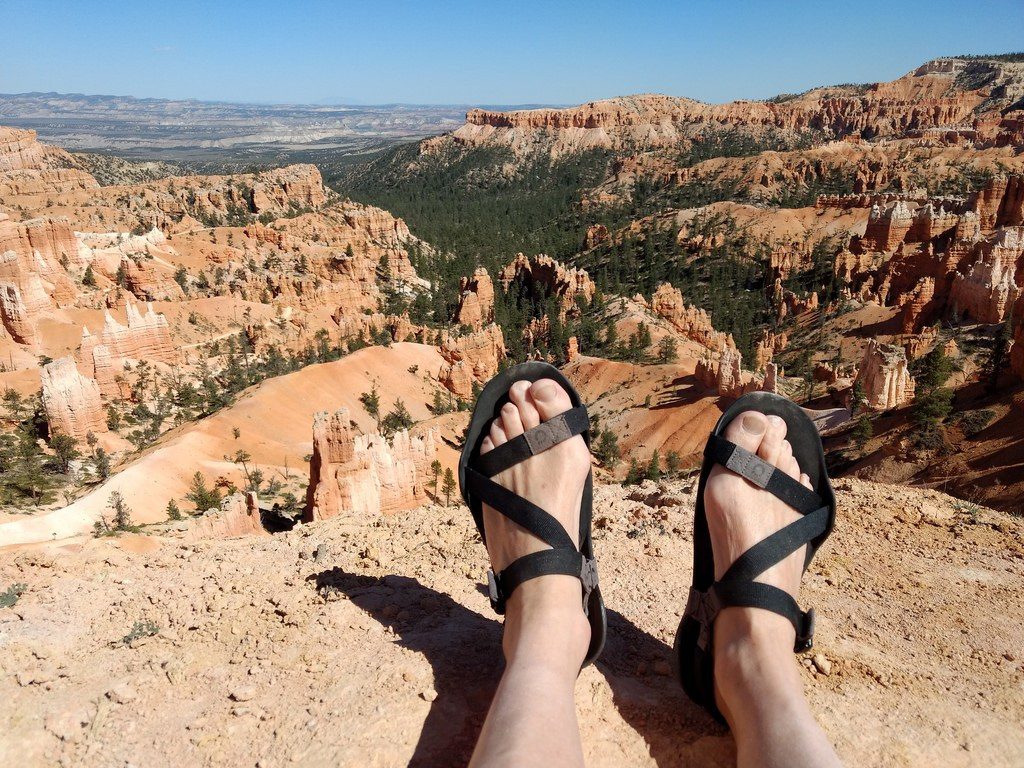
For the ultimate breathability, hiking sandals are the way to go. While you won’t get anywhere near the same protection and support as hiking boots – sandals are incredibly lightweight and flexible. If you’re on the right terrain, enjoy the feel of an open shoe and are confident enough to hit the trail in sandals – choose a pair that fit comfortably and have a strong grip (definitely not flip flops)
There are a few downsides to sandals and for many hikers, the risks outweigh the benefits. Sandals are prone to toe-bashing and cuts from rocks or plants. You’re also exposed to wild animals and you have no protection against the bite of a snake or wild dog.
You’ll need to be more careful and more nimble on your feet to avoid ankle twists and other injuries, but if you have a pair that fit well and you’re happy to take the risks – hiking in sandals can be an enjoyable experience.
4. Barefoot shoes
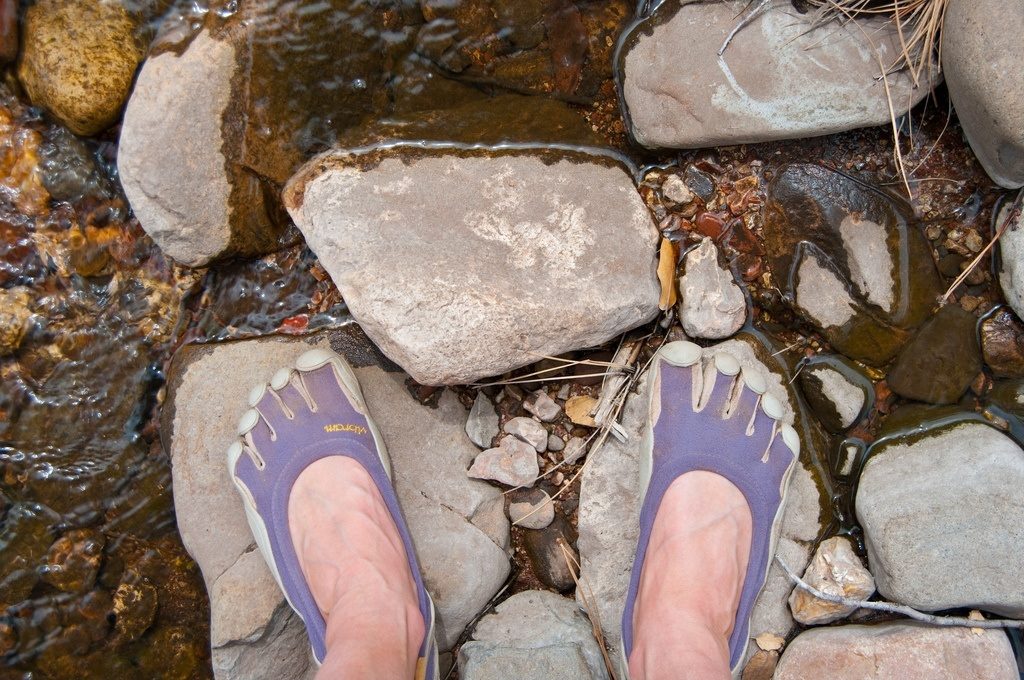
In recent years a new trend towards barefoot ultra-minimalist shoes has taken the world by storm. Popular shoes like Vibrams offer the barefoot experience and provide a thin layer of protection against the ground.
They take some getting used to, but some hikers enjoy the feel of being closer to the earth and the greater connection you have with the ground. Barefoot shoes offer very little in the way of support, but for the proponents that is precisely the appeal.
For long multi-day trecks, barefoot shoes have some hazards, but if you’re up to the task of developing your foot muscles and have the stamina to withstand harder impacts – you may be just the person to give these innovative new types of shoes a try. If you’re interested check out the popular Vibram Running shoe.
Boots Compared
| Style of Boots | Support | Breathability | Waterproof | Flexibility |
| Hiking Boots | Strong | Poor | Strong | Poor |
| Trail Runners | Good | OK | Good | OK |
| Hiking Sandals | Poor | Strong | Poor | Strong |
| Barefoot Shoes | Poor | OK | Poor | Strong |
These are generalized statements but the quality and durability of boots vary wildly from brand to brand. Some trailer runners are fully waterproof while others are not. Some hiking boots are very breathable whereas others are not.
How to Prevent Blisters
Blisters are a common problem for some hikes – but they’re not inevitable. There are a few things you can do to lower your risk of getting them and give your feet a fighting chance. Here are the most effective ways of preventing blisters:
- Break in your boots.
- Wear hiking socks.
- Use athletic tape and lubricant on sore spots.
How to Break in Hiking Boots
Lighter more flexible hiking boots will need little time of breaking in, while more rigid larger boots will require a bit of extra time to bed into your feet.
The best way to break in your new stiff boots is to wear them before you hit the trail. You don’t have to break your boots in, but it does lower the risk of getting blisters if you’re heading out for a long or multi-day trek.
A great way to break boots in is to wear them around the house for a few days, out in the yeard and whenever you get the chance. Any extra time you have to break them in will make them better molded to your feet when you get out there into the wild.
What other gear do I need?
Getting the right hiking boots are a step in the right direction (pun intended) but there are also some other tools that will make life on the trail much more enjoyable.
1. Portable Water Filters
One of those is a portable water filter. This will allow you to collect water as you go – meaning you don’t have to carry all your water from the start. Water filters use gravity or pump to remove protozoa, bacteria, and particles (purifiers also remove viruses) making almost all stream water safe for drinking.
2. Backpacking Stove
If you’re heading out on a multi-day adventure and want to eat some hot cooked food instead of granola bars all day – then a portable backpacking stove is a beautiful addition to your setup. Portable stoves are small, relatively light and provide a heat source to boil water for hot drinks and heat pans for camp stove cooking.
From re-hydrating pouch meals to slow cooking a tomato sauce, backpacking stoves make those long hard days on the trail more enjoyable – because you know at the end of it you’ve got a hot meal waiting for you.
3. Headlamp
To see around camp at night and to see the trail ahead when hiking in the dusk or low-light – a backpacking headlamp is an essential tool for the backpacking. Headlamps give you light when the sun has set – so you can get to camp, set up your tent and get prepared even on those moonless nights.
Look for a headlamp with a powerful bulb (high lumens) and a LED light so you can look at others directly without blinding them.
Final thoughts
Hiking boots are not essential but they are strongly recommended for most trekkers. There are a few alternatives to hiking boots if you’re looking for a different style of hiking.
The most popular alternative to hiking boots is trail runners which are lighter and more flexible (but also offer less support). On the other end of the spectrum, there are trekking sandals and barefoot shoes – which offer a unique and different experience. There are some risk with these shoes but for some, the benefits outweigh the downsides.
I hope you enjoyed this article, do check out my gear reviews and other guides on Outdoor Yak. Thank you for your support.
